Giving and Getting Directions…Local Style
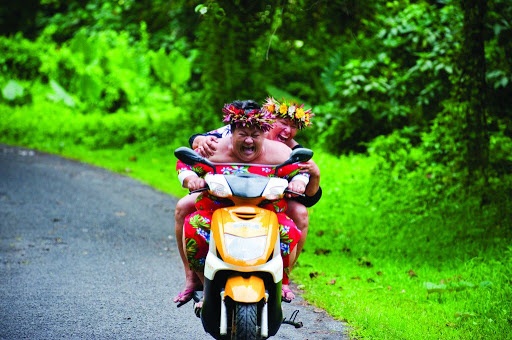
When it comes to giving directions, you probably think, left or right, or North, South, East or West. But like so many other things, kamaʻāina, or Hawaiʻi residents have their own unique way of telling folks how to get around. And once you understand the words, you’ll see just how easy it is!
Hawaiʻi locals rely the island’s natural landscape—the mountains and the ocean—to inform others of their location or to give directions. You might have heard someone say these two words when describing where that new restaurant is or the place they parked. There’s mauka, meaning inland or mountain and makai, meaning ocean. These are often used in place of traditional compass directions. To remember which means which, think “mau-ka” is toward the “mau-ntains.” We also use specific words when describing the East and West coasts of each island. The east coast is the Windward side and the West coast is Leeward. On Oʻahu, the Windward coast of the island includes the neighborhoods of Kailua, Kāneʻohe, Waimānalo, Lāʻie and Kahuku. This side of the island is cooler and wetter. The Leeward coast of Oʻahu comprises ʻEwa, ʻEwa Beach, Kapolei, Makakilo, Nānākuli, Maili, Waiʻanae and Mākaha. The Leeward side is more arid and drier.
Two other common local-style directions you’ll likely encounter are ʻEwa and Diamond Head. Again, these refer to physical locations on the island. ʻEwa refers to the town on the Island’s Leeward coast, and Diamond Head, Oʻahu’s iconic volcanic cone landmark, is located near Waikīkī on the East side of the island. So, next time you watch the local news or listen to the radio, when you hear, “Traffic heading ʻEwa-bound is slowing going,” you’ll know which direction they mean!
O’ahu’s Best Hikes
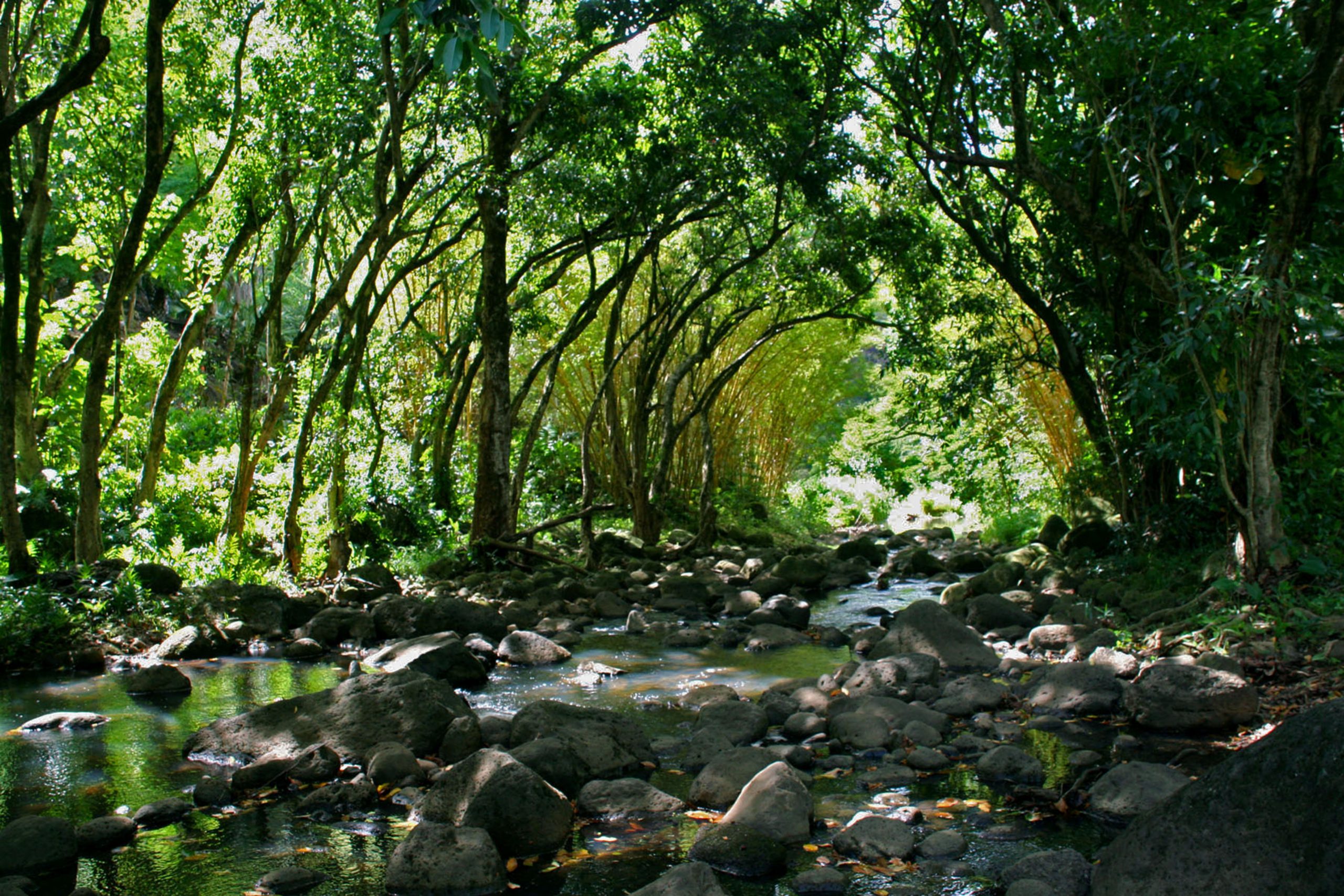
A hike on Oʻahu will reward your senses. You’ll be treated to panoramic ocean views, walk through verdant tropical forests and even encounter some of Hawaiʻi’s endemic native fauna and flora, such as the fire red ʻapapane, or Hawaiian honeycreeper and the bristled ʻōhiʻa lehua tree. And with nearly perfect weather year-round, hiking on Oʻahu is great way to experience the island. Here are five of my favorite hikes on Oʻahu.
Note: Bring water and snacks on your hike and wear sunscreen! Hiking on Oʻahu can be dangerous, so be sure to heed warning and “no trespassing” signs on the trail and bear in mind your personal health and fitness before you head out.
Diamond Head State Monument
Diamond Head is one of the defining landmarks of Oʻahu and is a volcanic tuff that formed about 300,000 years ago. It got its English name from 19th-century British sailors. They thought the shining calcite crystals found on the crater were diamonds! Native Hawaiians called the extinct volcano Lēʻahi. Today, the state monument is a 1.6-mile out-and-back trail that ends with panoramic vistas of the island, from the nearby Koko Head crater, downtown Honolulu, Waikīkī and Oʻahu’s west side.
Mānoa Falls
Sure, the other Hawaiʻi Islands may have more impressive waterfalls, but Mānoa Falls, tucked into the Honolulu neighborhood of the same name, is still worth the visit. This trail is well maintained, albeit often muddy, thanks to the frequent rain. The .8-mile-hike ends with a wide viewing area of the 150-foot waterfall and its cool, surrounding pool. Be sure to bring mosquito repellent!
ʻAiea Loop Trail
ʻAiea Loop Trail hike is a welcoming oasis just 20 minutes from the hustle and bustle of Honolulu. Located in central Oʻahu, the trail is situated in the Keaʻiwa Heiau State Recreation Area, a 384-acre park and campground. The 4.8-mile loop trail hugs the western slopes of Hālawa Valley and has a 900-foot elevation gain. Much of this hike is shaded, though; you’ll meander through Norfolk pines, lemon eucalyptus trees—giving the air a slight fragrance—and higher up, native ʻōhiʻa lehua and koa trees. The forest then give way to views of South Oʻahu, from Pearl Harbor to Diamond Head. You’ll also be able to spot the island’s H-3 highway, considered the nation’s most beautiful highways, and its most expensive one.
Lanikai Pillbox Trail
While it’s officially known as the Kaʻiwa Ridge Trail, this nearly one-mile out-and-back hike is better known by its colloquial name, the Lanikai Pillbox Trail. That’s because of the two military observation stations built in the area during World War II. This trail is very popular! The trailhead is located in the tranquil Lanikai neighborhood on Oʻahu’s Windward side, so be sure to respect nearby residents. The dusty, rocky trail is unshaded and has a steady, sloping incline. What it lacks in cover, it makes up for in sweeping views of Kailua, Lanikai, the Koʻolau Mountains and Mokulua Iki and Mokulua Nui, two offshore islets.
Kuliʻouʻou Ridge Trail
If you’re looking for intense cardio with a stunning payoff, head to the east Oʻahu neighborhood of ʻĀina Haina. That’s where the quad-burning Kuliʻouʻou Ridge Trail is located. The 5-mile round-trip hike ends at the summit of the Koʻolau Mountain range. You’ll encounter a 2,000-foot elevation gain and dozens of steps, so this hike is only recommended for intermediate and advanced hikers. The trail winds through Norfolk pine, guava, ironwood, formosa koa and Christmas berry trees. Two covered picnic tables appear roughly two-thirds into the hike, and I recommend resting here! From there, the trail continues to incline and at its steepest parts, there are stairs. But at the top, a near 360-degree view of Oʻahu awaits.
Hawaiian Monk Seal
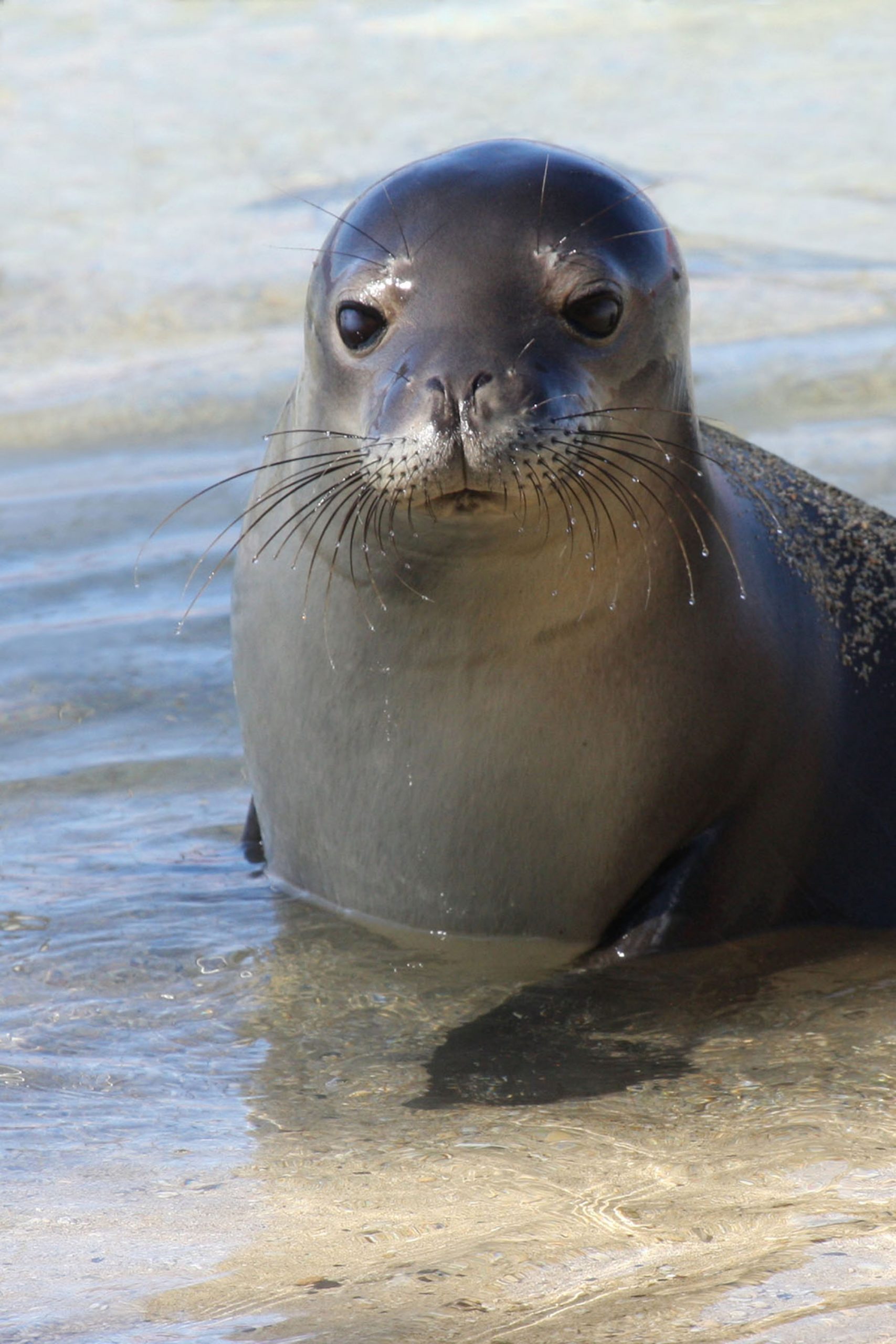
There are 18 different species of seals across the globe, but the Hawaiian monk seal is one of the rarest marine mammals in the world. While most seals swim and dive in freezing waters, the Hawaiian monk seal prefers a much warmer environment and enjoys the waters and beaches of the tropical Pacific. In fact, monk seals are endemic to the Islands and are only found in the Hawaiian archipelago. Most of the population can be found in the uninhabited Northwestern Hawaiian Islands, but they also forage around the shores of the main Hawaiian Islands.
Hawaiians have a special phrase for monk seals, ʻIlio holo I ka uaua, which means, “dog that runs in rough water.” (ʻIlio means dog in the Hawaiian language.) Monk seals are also included in some moʻolelo, or oral stories and oli or chants. It’s easy to see why: Adult monk seals are an average of 7.5 feet in length and weigh between 400 and 600 pounds. They enjoy near-constant snacking of fish, crustaceans, eels, and octopuses. Did you know that these cute mammals can hold their breath for up to 20 minutes and dive more than 1,800 feet? Wow!
Hawaiian monk seals are mostly solitary and unlike other seal species, they don’t live in colonies. If you encounter a monk seal, it will likely be alone. You may see their small head, with their big black eyes, bobbing in the sea, or their long, round body beached on the sand sunbathing. But remember, although they look loveable, monk seals can bite! Another good reason to keep your distance: Hawaiian monk seals are protected under the Endangered Species Act, the Marine Mammal Protection Act, and Hawaiʻi state law.
In the late 19th century, these mammals were hunted to near extinction and continue to suffer threats to their survival, including disease, natural predators like sharks and fellow monk seals, as well as human interaction and fishing entanglement. Researchers with the National Oceanic and Atmospheric Administration, or NOAA, estimate that there are only approximately 1,400 monk seals in existence. Of this small number, about 1,100 of these seals live in the Northwestern Hawaiian Islands and the remaining 300 seals live in the main Hawaiian Islands. But there’s good news, the population of the Hawaiian monk seal is slowly rebounding, thanks to tireless conservation efforts. NOAA programs have helped relocate vulnerable young and adult female seals from areas with predatory shark populations, vaccinate the mammals and continue to partner with local fisheries on seal safety. As a result, NOAA estimates that these interventions have resulted in 30 percent of the population staying alive today!
Hawaii Kai – An Outdoor Paradise
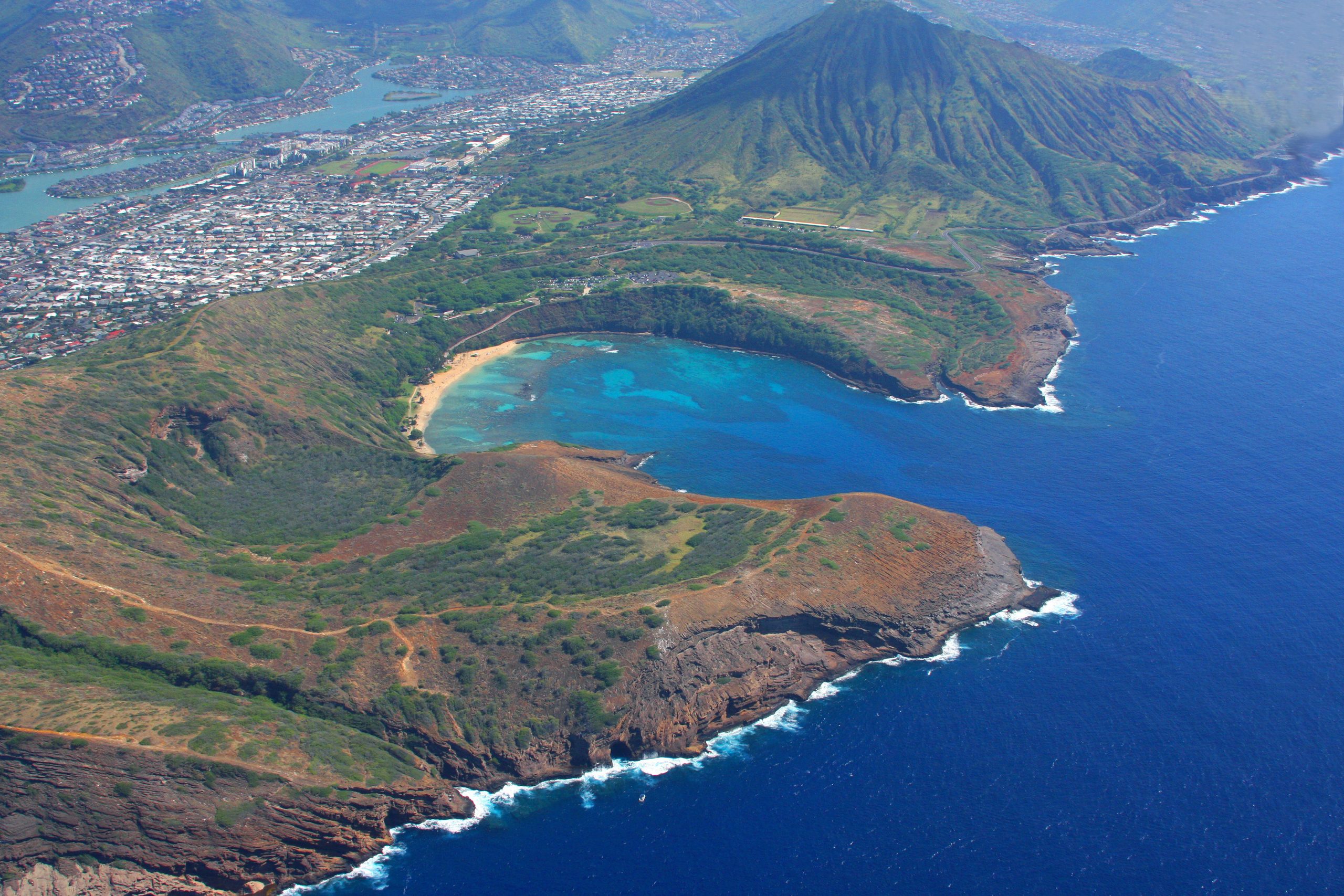
In Hawaiian, Hawaiʻi Kai translates to “Hawaiʻi by the sea.” This East Honolulu community is indeed oceanside, featuring premier Oʻahu real estate. The area was first developed by New York developer Henry J. Kaiser in 1959, just as Hawaiʻi became the 50th state. Like so many others, Kaiser came to Oʻahu on vacation and fell in love with its natural beauty. The East Oʻahu neighborhood has become one of Kaiser’s iconic legacies. In fact, Kaiser himself is credited with the name Hawaiʻi Kai. He wanted a name with meaning, and one that would be easy to pronounce but still sound Hawaiian.
While Hawaiʻi Kai is predominantly residential, it bears some of the island’s most notable, visited and treasured landmarks, with both kamaʻāina, or residents and visitors. This includes Makapuʻu and Sandy beach parks, popular with bodysurfers and bodyboarders. Hanauma Bay Nature Preserve, a large snorkeling area with calm waters and colorful fish, is one of the island’s most desired snorkeling locations. Hikers and fitness enthusiasts love the Koko Crater Railway Trail, also known as the Koko Head stairs. The hiking path is lined with more than 1,000 railway ties and sure to give you a workout. But the view at the top is worth it, including 360-degree views of East Oʻahu, Waikīkī, Diamond Head and more.
Most of the restaurants in Hawaiʻi Kai are located in shopping centers, namely the Hawaiʻi Kai Shopping Center and Koko Marina Shopping Center. But don’t let the locale fool you, the eateries offer tasty food and a welcoming atmosphere. There’s Moena Cafe, which serves breakfast and lunch with a local twist, all while using local ingredients on its menu. Don’t miss Uncle Clay’s House of Pure Aloha. This shave ice place, ran by co-owner Clay Chang, lives up to its name. They also use all-natural, house- made syrups. And if you’re looking for the classic beer and pizza, Kona Brewing Co. is a must visit, and be sure to try limited releases offered only at the brewpub.
When I think of Hawaiʻi Kai, I’m transported to Christmastime! Each December, right before Christmas, my husband Mike and I would venture to the back of Kalama Valley in Hawaiʻi Kai and visit the poinsettia farms to buy the crimson plants for the holidays. While there aren’t many farms there now, it was a fun tradition that started when we were college students at the University of Hawaiʻi at Mānoa. What wonderful holiday memories!
Ewa Beach Offers Affordable Oahu Housing
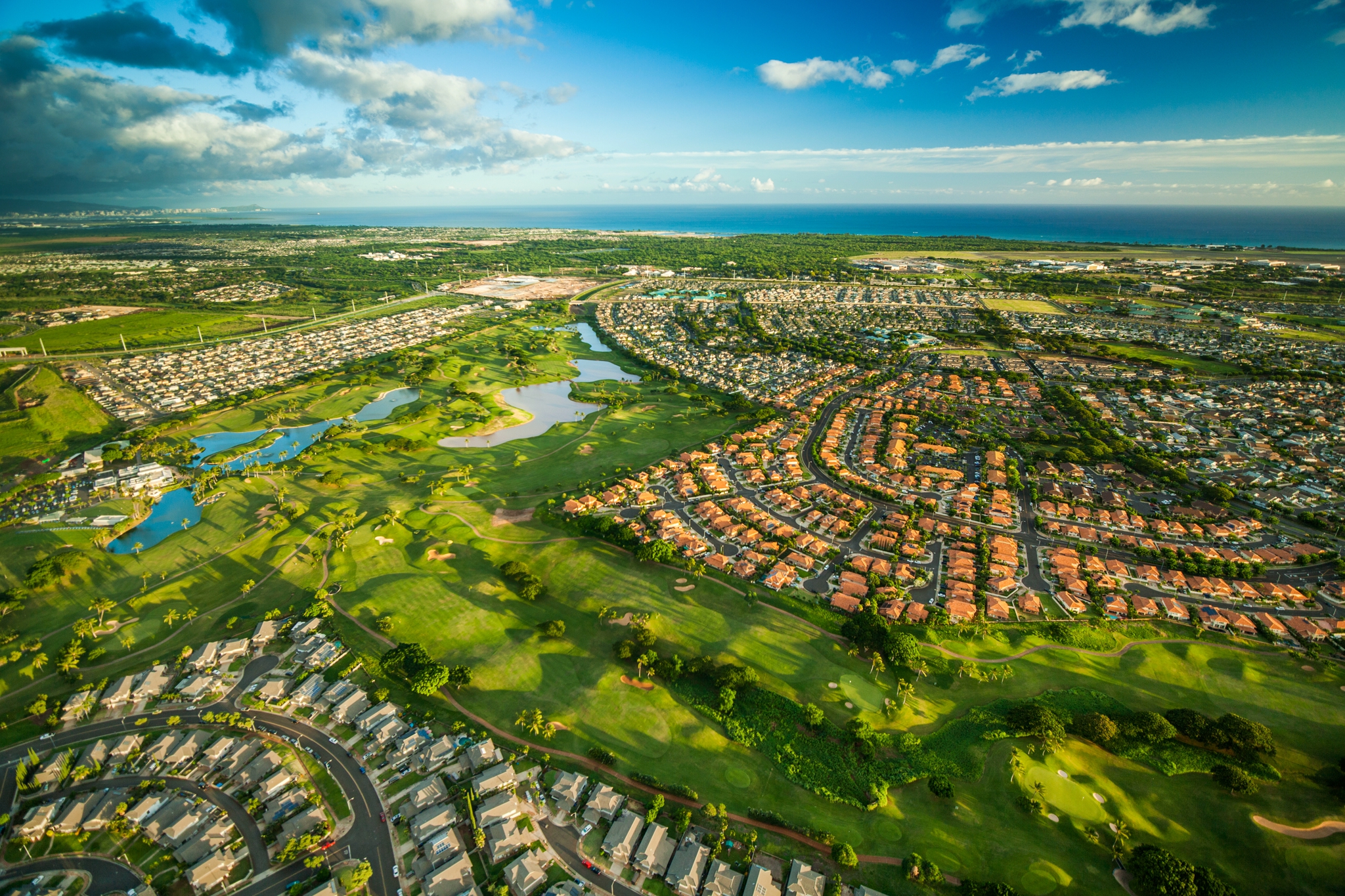
On Oahu, you’ll often here people say town bound, meaning Honolulu, or Ewa bound, meaning Ewa Beach, or West. These days, more and more kamaaina are opting to go Ewa. And for good reason: Houses are spacious, new, and best of all, some of the most affordable on the island. The amount of space you can get in Ewa Beach can’t be beat on Oahu. Ewa Beach has its roots as a former sugar plantation community. (You can see plantation-era homes in older parts of the Leeward community). Today, the neighborhood is growing with master-planned communities opening each year—some with oceanfront properties and golf courses—giving homeowners plenty of options. Plus, the community is perfect for families. It has great schools, community parks and pools, public golf courses and plenty of shopping and dining. Ewa Beach is also a short drive to Kapolei and Ko Olina, meaning there are now fewer reasons for many locals to make the drive, and the fight the traffic, to Honolulu.
Golf Courses
While most of the golf courses in Hawaii are connected to resorts and hotels, many of Oahu’s courses are independent and several of them are available for the public. In Ewa Beach, former plantation land has transformed into housing developments, complete with the added benefit of a manicured golf course. And although the weather is warmer and the vegetation sparser, some of the islands best greens are located west. The private Ewa Beach Golf Club is open to the public and has an abundance of trees and a double green by the 2nd and 16th holes. Affiliated with the Hawaii Prince Hotel in Waikiki, the Hawaii Prince Golf Course is a 27-hole course on former sugarcane land designed by Arnold Palmer and Ed Seay. Designed by Robin Nelson, the Coral Creek Golf Course was cut from coral and features 30- to 40-foot cliffs.
Hawaiian Railway Society
The Oahu Railway and Land Company was the brainchild of Benjamin Dillingham. A Honolulu businessman from Massachusetts, Dillingham wanted to develop Ewa. But in the 1870s, the only mode of transportation was horse-drawn wagon. So Dillingham built a railroad running from Honolulu to Aiea, and eventually Ewa Beach and the sugar mill he owned. As the island’s sugar, and later pineapple plantations prospered, so too, did the railway system. Oahu Railway and Land Company ran until 1971. Soon after the Hawaiian Railway Society formed, an educational nonprofit that has restored 6.5 miles of track—from Ewa Beach to Nanakuli—as well as three vintage diesel locomotives. The society offers train rides the second Sunday of each month and works to preserve the story of Hawaii’s only historic railroad.
Not to be Missed Waikiki and Diamond Head
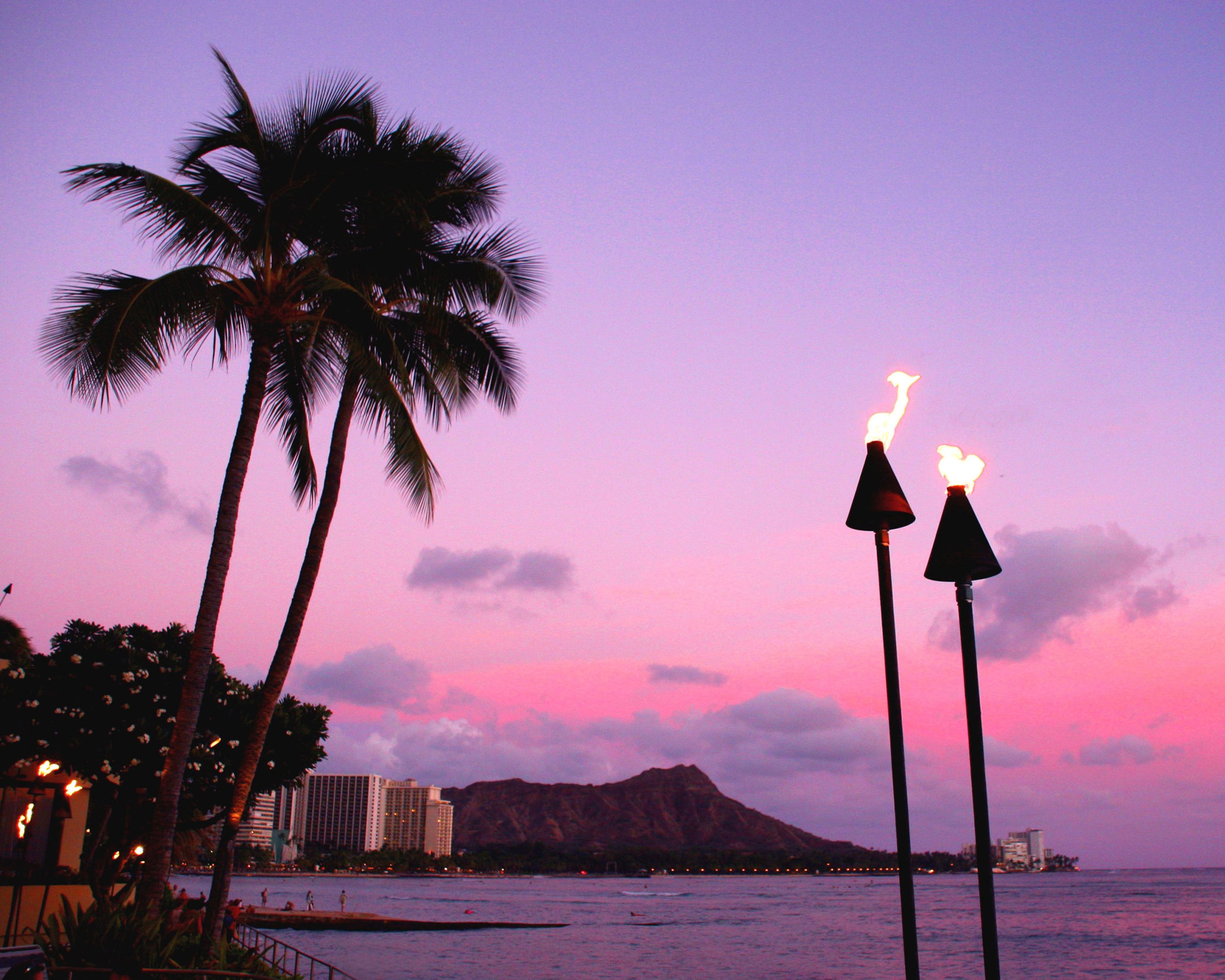
Frequented by visitors and treasured by kamaaina, the southeast neighborhoods of Diamond Head and Waikiki are two of Oahu’s most well known. The area is home to much of the island’s dining, nightlife, and shopping scenes. With the world-famous Leahi, or Diamond in the background, Waikiki—meaning “sprouting water,” in Hawaiian—was once frequented by Hawaiian royalty. At the turn of the 20th century, it introduced Hawaii to the outside world when the Islands’ first hotel, the Moana Surfrider opened in 1901. Waikiki is now home to dozens of hotels, in addition to five-star restaurants, luxury shopping and family friendly attractions such as the Honolulu Zoo, the Waikiki Aquarium and Kapiolani Park. And the Diamond Head State Monument is one of Oahu’s most hiked trails on the island. Both remain iconic Oahu destinations, whether it’s your first visit to the island, or you were born and raised on Oahu.
Diamond Head State Monument
Diamond Head Crater is perhaps Hawaii’s most recognized and photographed landmark. It got its name from sailors who mistook the slope’s calcite crystals for diamonds. Hawaiians had their own name for the significant crater, calling it instead Leahi, meaning brow of the tuna. They thought the crater’s sharp slope looked like an ahi, or tuna fish head. Diamonds and fish heads aside, for many visitors, hiking the crater is a must do during a trip to Oahu. With a flat path most of the way—there are stairs near the top—it’s an easy-to-intermediate hike. But the views at the top make up for the lack of terrain diversity, and the crowds. Here you can see Waikiki and Honolulu as well as Koko Head Crater and the rolling waves of the ocean. On a clear day, you can even see the outlines of Maui and Molokai. Cori’s Tips: Start this popular hike early, and don’t forget water and sunscreen. This trail is sunny and hot.
Kalakaua Avenue
Waikiki’s Kalakaua Avenue provides an introduction to the thousands of first-time visitors to Oahu. The bustling avenue, with its long stretch of beach, is dotted with sophisticated resorts, each with its own microcosm of shopping and dining. The area launched tourism in Hawaii. In fact, tourism is still the No. 1 driver of the economy today. The avenue is named after the monarch, King David Kalakaua. Known as the Merrie Monarch, King Kalakaua had a passion for music, hula and festivities. (The annual hula competition in Hilo, aptly named the Merrie Monarch, is in honor of him.) If you’re looking for some high-end retail therapy, look no further than Kalakaua Avenue! The Luxury Row featuring stores such as Tiffany & Co., Coach, Gucci, Yves Saint Laurent and Chanel. There’s duty-free shopping at T Galleria. The Royal Hawaiian Center and the Waikiki Beach Walk each feature upscale local boutiques, national brands and restaurants. The newly redeveloped International Market Place, a Waikiki shopping institution first opened in the 1960s now has high-end shops and dining.
Windward Coast – Lush and Tropical Oahu
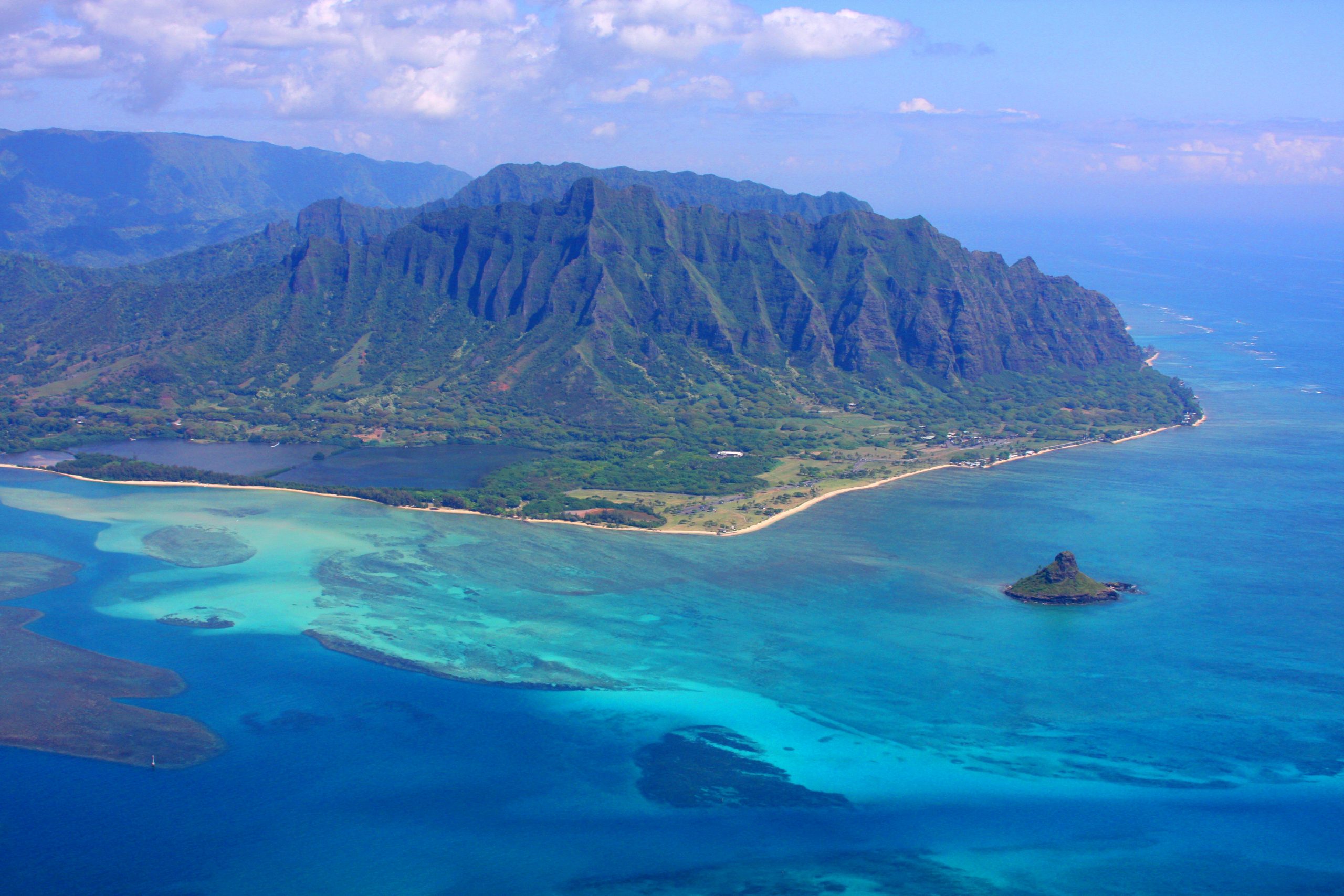
Magical. That’s how I describe the Windward Coast in one word. The eastern, or Windward side of the island is wetter and cooler, resulting in the lush, tropical beauty for which Hawaiʻi is so famous. The Windward Coast comprises bucolic towns dotted along the shore, from Waimānalo at the south-eastern side of the Oahu, to rural Hauʻula, a country community on Oʻahu’s north-east coast, just before you officially transition into the North Shore. A visit to the Windward Coast unveils the allure of Oʻahu’s laid-back, no-worries lifestyle, with stunning vistas serving as backdrop.
The Windward Coast holds a special place in my heart. When my family first moved to Oʻahu in 1959—the same year Hawaiʻi became a U.S. state—we lived in Kāneʻohe. In fact, my parents still live there! The town is tucked in between the dramatic Koʻolau mountain range and the scenic Kāneʻohe Bay, offering residents never-ending panoramas. I still call the Windward side of the island home, and live in Kailua with my husband Mike.Adjacent to Kāneʻohe, Kailua has transformed from a sleepy neighborhood to a buzzing beach town with a destination dining and boutique shopping. We are still perhaps best known for having some of the world’s best beaches, including Lanikai and Kailua beach parks, each with powdery white sands and serene turquoise waters.
Driving along the two-lane Kamehameha highway is great way to take in the splendor of the Windward Coast and experience authentic Island life. Along the way are wonderful gems such as a botanical garden, a peaceful Japanese Buddhist temple and a rugged ranch. One such hidden gem is the Hoʻomaluhia Botanical Gardens. In Hawaiian, hoʻomaluhia means “a peaceful refuge.” That’s a fitting name for these rolling 400-acre gardens, framed by the Koʻolau Mountains. Hoʻomaluhia Botanical Gardens provides a pleasant escape from Oʻahu’s urban core and delightful place to enjoy the island’s outdoors. The verdant gardens feature plants from Hawaiʻi, Polynesia, Melanesia, the Americas, India and Africa. Hoʻomaluhia Botanical Gardens were designed in 1982 by the U.S. Army Corps of Engineers to provide flood protection for Kāneʻohe. One of the best parts is the 32-acre lake—from which you can do catch-and-release fishing—enveloped by sprawling lawns, perfect for picnicking.
Not far from these gardens is the Temples Memorial Park. That’s where the Byodo-In Temple is located. The Byodo-In Temple is a full-size, intricately crafted replica of a 900-year-old temple in Uji, Japan. In addition to this stunning red temple, the manicured grounds also feature a koi pond, a five-foot high, three-ton brass bon-sho, or sacred bell, cast in Osaka, Japan, and a nine-foot tall, gold-lacquered Buddha resting atop a lotus.
From here, Kamehameha Highway snakes past Kualoa Regional Park, revealing the offshore islet, Mokoliʻi, also known as “Chinaman’s Hat” in the distance. Just past the park is the storied Kualoa Ranch. The ranch is owned and maintained by a sixth-generation Oʻahu family. Kualoa Ranch is part working ranch and part tour and activity center, featuring ATV and horseback rides, kayaking, ziplining, farm-to-fork tours and movie sites tours. Fan-favorites like “Jurassic Park,” “50 First Dates,” and “Lost,” have all been filmed at Kualoa Ranch!
Ko Olina – Home to Oahu’s Luxury Resorts
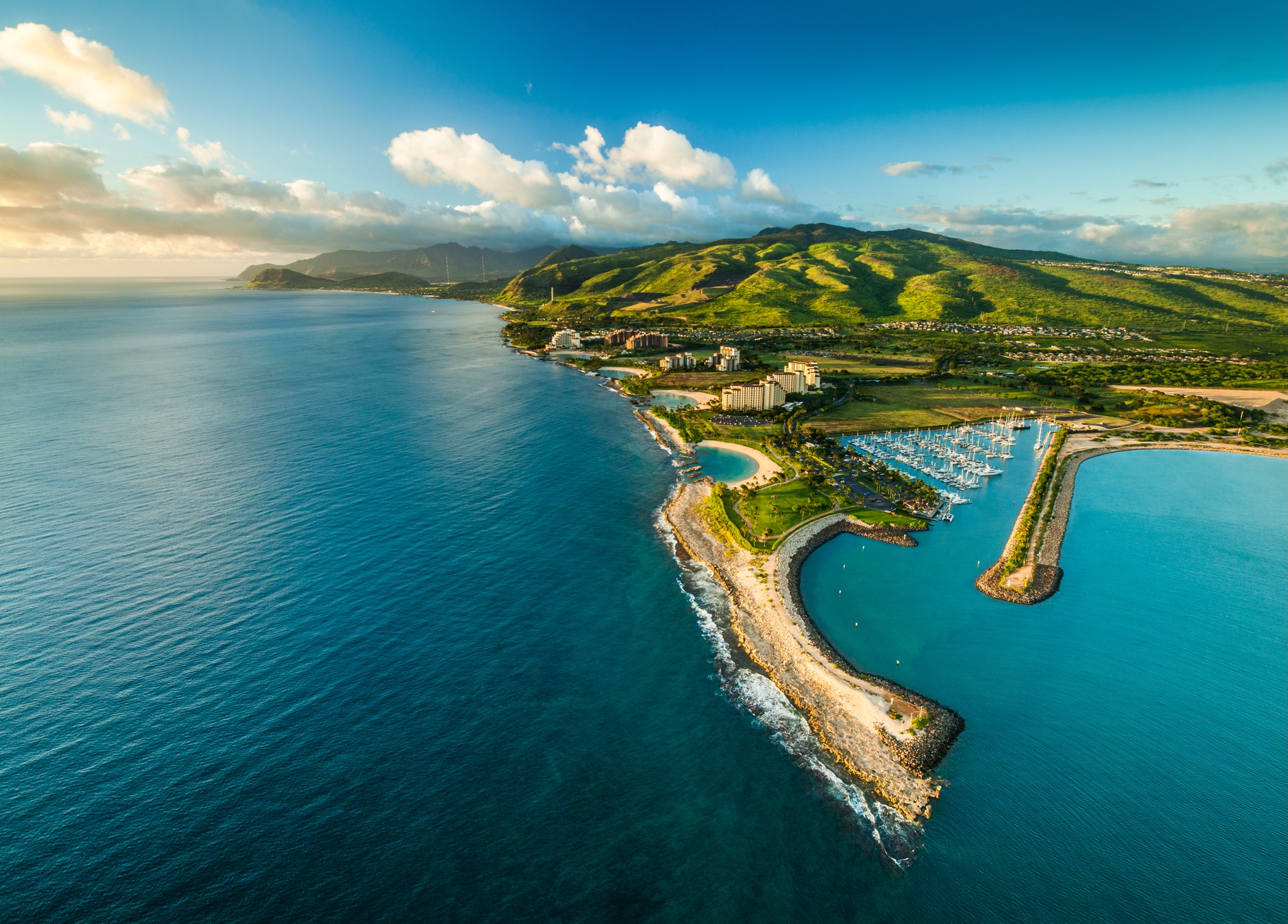
Ko Olina Resorts
Enter through the gates of the 642-acre master-planned community of Ko Olina and you’ll almost feel like you’re on another island. With three massive resort complexes, many visitors to Oahu are choosing to skip Waikiki and spend their trips in West Oahu instead. This side of the island is sunnier and arid, the perfect conditions for a round of golf at the Ko Olina Golf Club or a chartered snorkel session from the Ko Olina Marina. The resort community features three hotel complexes. The Marriott Ko Olina Beach Vacation Club features oceanfront hotel rooms and an on-site luau. Aulani, a Disney Resort, opened in September 2011, and because it’s Disney, this resort is kid friendly, from breakfast with Mickey to a teens-only spa. The newest Ko Olina resort is the luxurious Four Seasons Ko Olina. Nearly every room in the 17-story hotel offers an ocean view. Guests can enjoy the infinity pool or get a beachside massage in a private cabana. Four Seasons Resort Ko Olina has five restaurants, including its signature seafood restaurant, Fish House.
Cori’s Tips: Even if you’re not staying in one of the three luxury resorts, you can still visit Ko Olina. The best reason to? The area’s four man-made lagoons. Each is completely protected—perfect for kids—and is surrounded by shaded grassy knolls. Be sure to arrive at the lagoons early; parking at each is limited.
Kapolei – Oahu’s Second City
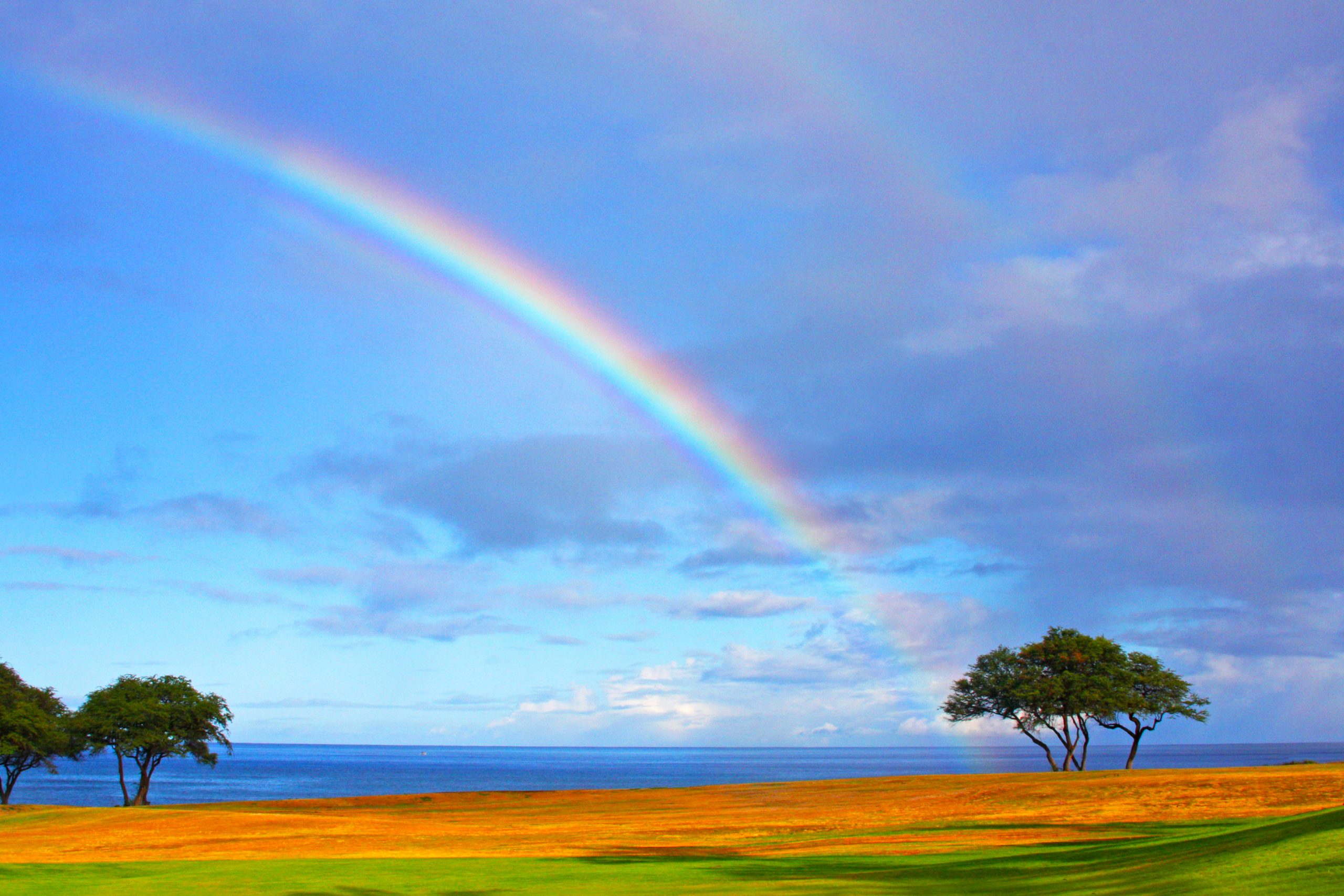
For nearly two decades, Kapolei has been touted as Oahu’s “second city.” The goal: Build houses and create jobs in West Oahu so people didn’t have to live or commute to Honolulu. For many, the Leeward city is the answer. A construction boom has resulted in several new subdivisions, government amenities and schools. And when it comes to shopping and dining, if you can think of it, chances are it’s in Kapolei. Although Kapolei mostly has big box stores and chain restaurants, there are still local boutiques and eateries dotted throughout. Ko Olina, too, has significantly expanded over the years. Once an area on the island where few tourists dared to wander, it’s now a visitor destination in and of itself. The 642-acre master-planned vacation and residential community features three resorts, the Marriott Ko Olina Beach Vacation Club Aulani, a Disney Resort and the newest addition, Four Seasons Ko Olina.
Wet ’n’ Wild Hawaii
The beach can wait for tomorrow when there’s a place like Wet ’n’ Wild Hawaii! The state’s only water park, Wet ’n’ Wild is located just off of the highway in Kapolei. There are more than 25 slides, pools and funnels at the 29-acre park, including the Tornado, a 45-foot funnel or the Shaka, a 36-foot U-shaped slide. For something more relaxing, jump on an intertube and float down the lazy river or swim in the 400,000-gallon wave pool. The kids will love the Water World playground with mini slides, ropes and water cannons. After you’ve worked up an appetite, visit the Windjammer Café.
Cori’s Tip: Avoid the lines, and save money by purchasing your tickets online! Visit wetnwildhawaii.com
Kaneohe – The Perfect Blend of Contrasts
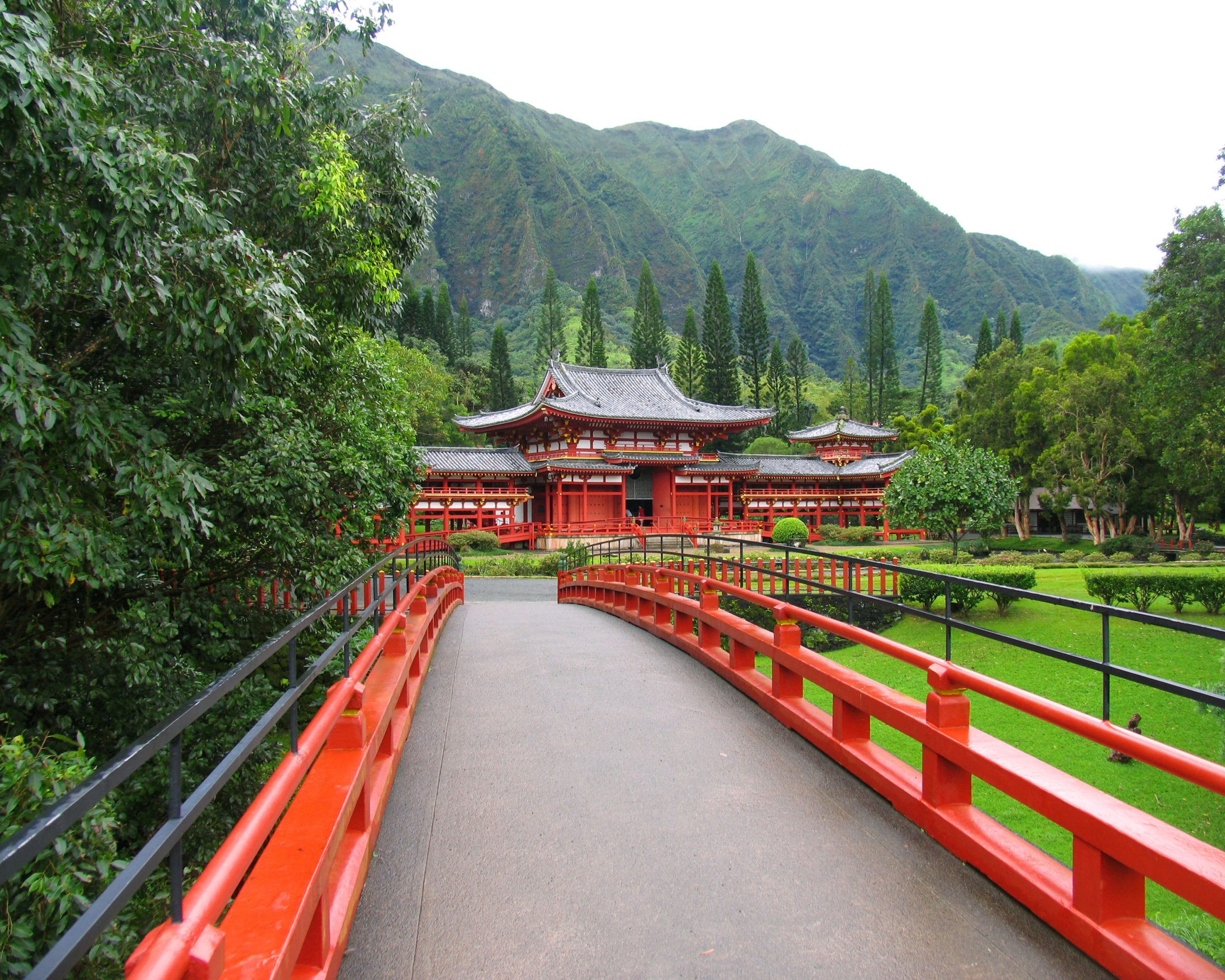
A gem in Windward Oahu, Kaneohe is chock full of natural wonders. There’s beauty from mauka to makai, as they say in Hawaii, or from the mountain to the sea. Kaneohe is situated between the Koolau Mountains and Kaneohe Bay. For example, the neighborhood is home to the 400-acre Hoomaluhia Botanical Garden. In Hawaiian, hoomaluhia means “a peaceful refuge.” These verdant gardens feature plants from the Americas, Africa, India, Melanesia, Polynesia and, of course, Hawaii, as well as a 32-acre lake. For tranquility in a Windward oasis, look no further than the Byodo-In Temple, located in the Valley of the Temples in the Kaneohe neighborhood of Kahuluu. It was dedicated in August 1968 to commemorate the 100-year anniversary of the first Japanese immigrants to Hawaii. The temple is intricate recreation of a 900-year-old temple in Uji, Japan. The temple and its manicured grounds offer an array of peacefully secluded areas, including a koi pond. You’ll also see beautiful peacocks freely roaming the grounds. At the town’s edge is the idyllic Kaneohe Bay. The large bay has been the backdrop for several movies and TV shows, including Gilligan’s Island and 50 First Dates.
Kaneohe Bay
At nearly eight miles long and three miles wide, Kaneohe Bay is the largest sheltered body of water in the main Hawaiian Islands. The bay stretches from the U.S. Marine Corps military base to the offshore islet Mokolii, also known as Chinaman’s Hat. The bay is also home to the Kaneohe Bay Yacht Club, where many Windward residents have learned to sail since 1924. Watch the club’s members in action during their weekly Thursday evening races. Near the middle of the bay is a sandbar, called Ahu o Laka in Hawaiian. It’s only accessible via boat or kayak, and is a popular barbecue and beach volley spot on the weekends during low tide. And off in the distance is the islet Moku o Loe, also known as Coconut Island. You’ve likely seen the islet on TV; it was a film location for Gilligan’s Island. Today, the islet is a marine research facility, owned the University of Hawaii’s Hawai‘i Institute of Marine Biology. Another unique aspect of Kaneohe Bay is the more than 40 patch and fringe reefs. Scientists from the state’s universities and from across the globe come to Oahu to study the bay’s reefs. Kaneohe Bay was also a place of significance for Native Hawaiians. The bay served as home to a handful of Hawaiian fishponds. The large ponds were unique forms of aquaculture involving herding adult fish in shallow tidal areas and cultivating them. Today one such fishpond, Heeia Fishpond is being restored in the traditional manner.
Cori’s Tip: Explore Kaneohe Bay by booking a snorkeling or glass-bottom boat tour.
Kualoa Ranch
What do Jurassic Park, 50 First Dates and Godzilla all have in common? A part of each of these movies was filmed at Kualoa Ranch. Nestled between Kaneohe Bay and the Koolau Mountains, Kualoa Ranch encompasses 4,000 acres and is a private nature preserve and a working cattle ranch. But it’s more than just a cool set location and home to 500 livestock. It’s also a tour and activity center. Kualoa Ranch is an adventurer’s dream, and all in one location! You can explore the beautiful grounds on horseback or an ATV, or see the ranch from above on a zipline. For the foodies, Kualoa has farm-to-table tours, as well as Hawaiian culture tours for the history buffs. If you just want to see where the silver screen dinosaurs roamed, check out the movie sites tour. Even better: From the grounds of Kualoa Ranch, you’ll have a stellar view of Mokolii, also known as Chinaman’s Hat, an offshore islet.
Cori’s Tip: It’s best to kayak or paddleboard to Chinaman’s Hat instead of swimming to the offshore islet. It’s farther than it looks! Be sure to book any tours or activities in advance.

 Facebook
Facebook
 X
X
 Pinterest
Pinterest
 Copy Link
Copy Link

